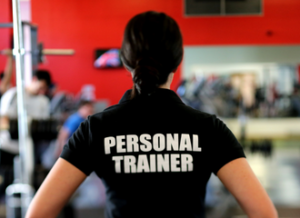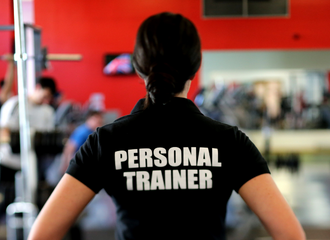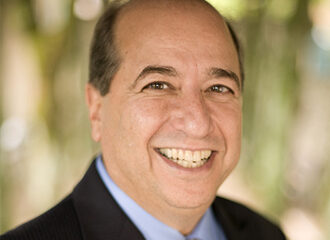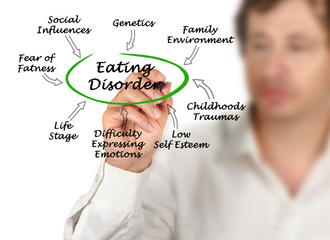 As a coach or a personal trainer, it’s important to learn how to recognize the signs and symptoms of eating disorders and understand your role in preventing them. In this post we review the common types of eating disorders, which sports put athletes as risk, and finally what coaches and personal trainers can do about eating disorders.
As a coach or a personal trainer, it’s important to learn how to recognize the signs and symptoms of eating disorders and understand your role in preventing them. In this post we review the common types of eating disorders, which sports put athletes as risk, and finally what coaches and personal trainers can do about eating disorders.
What are the primary types of eating disorders?
An eating disorder is a psychiatric condition in which there is a persistent disturbance of eating or eating related behaviors that often results in medical, psychological, and social impairment. The most common eating disorders are binge-eating disorder, bulimia, anorexia, and other specified feeding or eating disorder (OSFED).
People with Binge-eating disorder engage in binge eating episodes. They eat large amounts of food in a discrete period of time, often feeling out of control and past feeling full. Those struggling with binge-eating disorder often experience a great deal of shame with their behaviors and unlike bulimia, they do not compensate for the food intake.
Individuals with Bulimia Nervosa engage in cycles of binge eating and purging behaviors to compensate for binge eating episodes. The purging associated with bulimia may take many forms including self-induced vomiting, excessive use of laxatives or diuretics, or compulsive exercising.
Those who struggle with Anorexia Nervosa or Atypical Anorexia Nervosa purposefully restrict their intake, which leads to significant weight loss and/or a significantly low body weight in the context of age, developmental trajectory, and physical health. These individuals have an intense fear of gaining weight and high levels of body dissatisfaction regardless of weight, shape, or body size. Those with AN binge/purge type also engage in binge eating episodes and/or purging.
Finally, Other Specified Feeding or Eating Disorder (OSFED) is a diagnosis given to those who do not meet the strict diagnostic criteria for AN, BN, or BED, but report behaviors and symptoms severe enough to cause impairment across various domains.
Which athletes are most likely to develop eating disorders?
Eating disorders can affect anyone. Female athletes are at a higher risk, but male athletes can also develop eating disorders. According to NEDA, it’s estimated that disordered eating affects 62% of female athletes and 33% of male athletes. The risk is compounded for marginalized athletes, such as gender and sexual minorities.
Athletes tend to be at a greater risk for having an eating disorder if they play sports that focus on personal performance, appearance, diet, and weight requirements as well as sports that focus on the individual rather than the entire team. Such competitive sports include:
• Swimming
• Diving
• Bodybuilding
• Wrestling
• Gymnastics
• Dancing
• Figure skating
• Rowing
What can coaches and trainers do about eating disorders?
Coaches, personal trainers, and instructors play a critical role in an athlete’s development. Here are some things you can do to protect your players and clients:
1. Recognize the signs and symptoms of eating disorders and understand your role in helping to prevent them. Those with eating problems may often hide their symptoms to avoid calling attention to them. Be aware that eating disorders do not have a “look”. Anyone can be affected, and the medical and psychological consequences are serious, and sometimes fatal, regardless of body size.
2. Equip athletes with accurate information regarding body composition, nutrition, and sports performance in order to reduce misinformation and to challenge practices that are unhealthy and even dangerous. Invite local therapists or dieticians who specialize in eating disorders to provide education and around the signs and symptoms and/or provide resources to enhance eating disorder awareness.
3. Emphasize the health risks of restricting especially for athletes with menstrual irregularities or amenorrhea. The athlete should be referred for medical assessment and referred to an eating disorder professional.
4. Refer to a sports psychologist, dietician, and/or a therapist skilled at treating eating disorders if an athlete is chronically dieting and/or exhibits disordered eating. Early detection increases the likelihood of successful treatment. If left untreated, the problems may worsen or progress to an eating disorder.
5. De-emphasize weight by not weighing athletes and not focusing on appearance. Instead, shift the focus on other areas to improve performance such as stamina, strength, flexibility, hydration, and quantity of sleep. Destigmatize mental health treatment by encouraging athletes to prioritize their emotional health, as well.
6. Do not assume that reducing body fat or weight will enhance performance, as studies show this does not necessarily apply to all athletes. Additionally, some individuals may attempt to lose weight by engaging in disordered and dangerous behaviors. It is estimated that 20-25% of dieters will develop a clinical eating disorder. Improved performance should not be at the expense of the athlete’s physical and mental health.
7. Do not praise weight loss and do not shame weight gain, body shape or body size, including your own. Remember that weight is not a reliable indicator of health, and any comments about the body (no matter how well intended) can negatively impact your athlete’s mental and physical wellbeing for years to come.
8. Do not automatically curtail athletic participation if an athlete is found to have eating problems, unless recommended by a medical or mental health provider. Consider the athlete’s health, physical and emotional safety and self-image when making decisions regarding an athlete’s level of participation in their sport.
9. Sport personnel should explore their own values and attitudes regarding weight, dieting and body image, and how these values and attitudes may inadvertently affect their athletes. They should understand their role in promoting a positive self-image and self-esteem in their athletes. Consider taking a free test to examine your own implicit biases about weight: https://implicit.harvard.edu/implicit/selectatest.html
Conclusion
Athletics can be a positive experience for many as it builds self-esteem and teaches the value of teamwork. However, with the added pressure to win and an emphasis on body weight and shape it can create a toxic environment for some individuals. It’s vital that coaches and trainers know the warning signs of eating disorders, understand their role in preventing them and encourage healthy behaviors.
Recovery from an eating disorder is possible and help is available.
Resource: https://www.nationaleatingdisorders.org/athletes-eating-disorders



